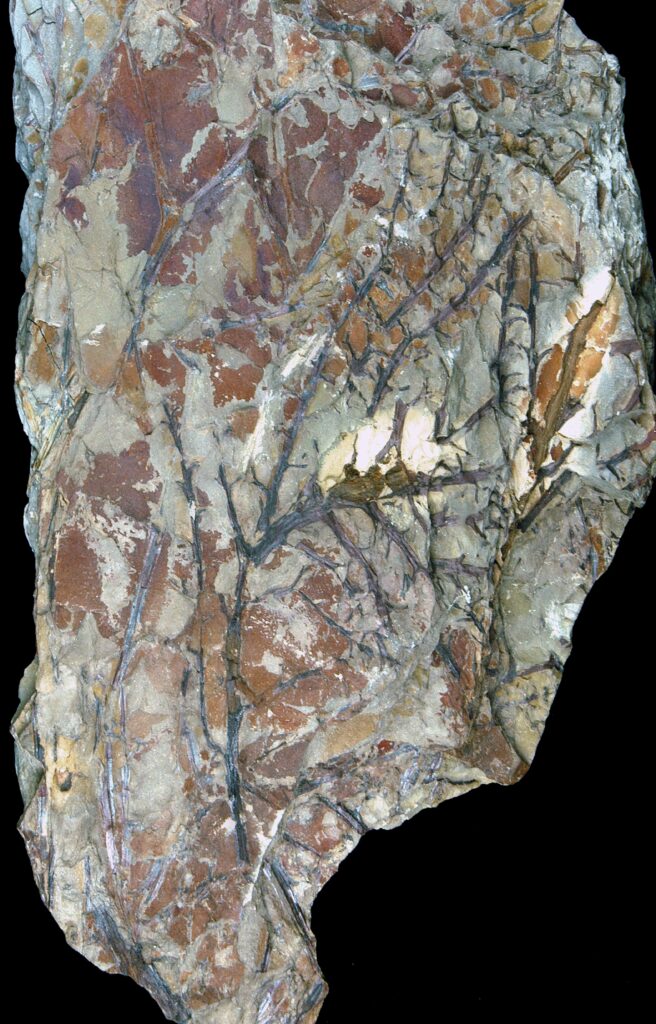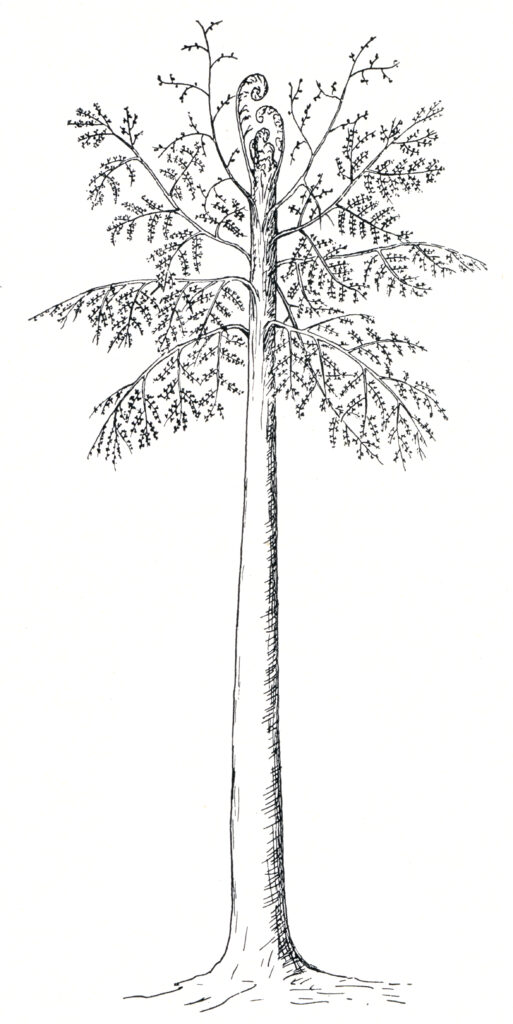October 2024: Branch system of a progymnosperm

Aneurophyton germanicum Kräusel & Weyland
Middle Devonian (Givet, ca. 385 million years)
Upper Honsel layers, Kirberg quarry, Wuppertal-Elberfeld, NRW
Length of the slab approx. 28 cm
SNSB-BSPG 1971 XVII
After the higher plants (vascular plants) had conquered the terrestrial realm in the Lower Devonian and started to grow larger and eventually become trees, the major groups of vascular spore-producing plants that still exist today, e.g., the lycopods and horsetails, soon emerged. A little later, the first seed plants also appeared. The way there led via a series of peculiar plants, all of which no longer exist today, but which have been important, sometimes forest-forming elements of the floras in the course of the earth’s history, and whose remains have been preserved as fossils in many places.
These peculiar plants include the progymnosperms, which were not seed plants because they did not produce seeds (but spores), but which had clearly reached an evolutionary stage not far removed from the gymnosperms because of their woody stems and wood characteristics. Progymnosperms first appeared in the Middle Devonian (approx. 390 million years ago) and disappeared again at the end of the Mississippian (approx. 325 million years ago). They were shrubs, trees or lianas whose trunks bore branch systems to which small terminal branchlets or flat, leaf-like structures were attached.

The oldest progymnosperms are the Aneurophytales. An important representative of this group is Aneurophyton germanicum, the species that gave the order its name and our fossil of the month, which is known from the Middle and Upper Devonian of Europe and North America. Reconstructions show the plant as a fern-like tree that did not have flat fronds or leaves, but instead had systems of branches which extended in three directions (three-dimensionally), spirally arranged on the trunk and with short, forked terminal branchlets. The fossil of the month shows part of such a branch system. The specimen comes from the former Kirberg quarry in Wuppertal-Elberfeld. Geologist and paleobotanist Hermann Weyland of Cologne had discovered a rich Middle Devonian flora there in the 1920s and subsequently described it scientifically with his Frankfurt colleague Richard Kräusel.
Michael Krings